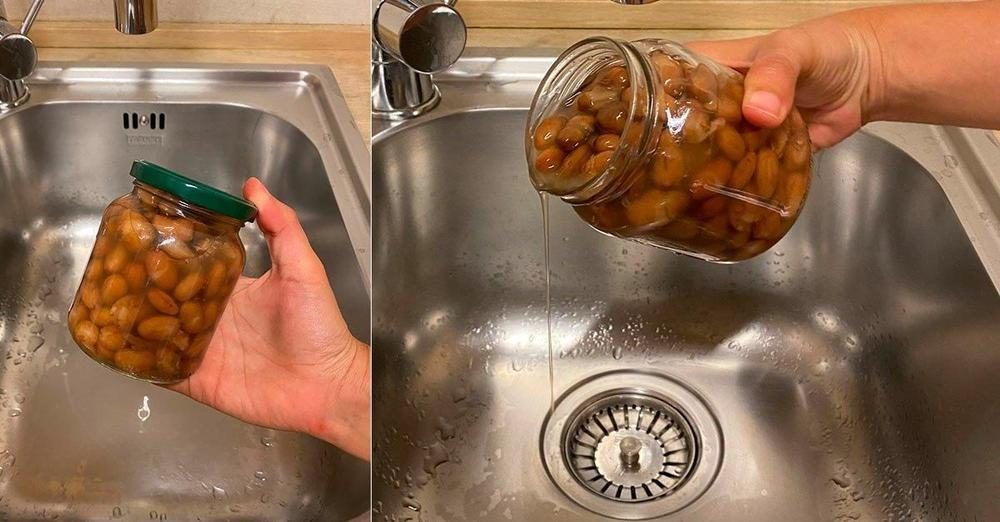How to Store Flour at Home? Here Are All The Tips to Avoid Wasting It, From Containers to Cleaning
To preserve the different types of flours, it is good to follow some rules, so as to have them available for a long time: choose a cool and dry pantry, away from light and heat and make sure that the container is well sealed.
;)
Flour is one of the foods that is rarely missing from homes given its multiple uses: perfect for making savory and sweet leavened products, cakes, pasta, it is also useful as a thickener in sauces and creams. In short, a real all-purpose ingredient that also has the advantage of having a rather long shelf life, provided it is stored correctly. Like all foods, in fact, flours ( durum wheat, soft wheat, alternative cereals, gluten-free, legumes, refined or wholemeal) are preserved by putting into practice some precautions that make the difference: from the choice of location, favoring the classic cool and dry place, away from direct light, to the container, better if airtight, through cleaning, which prevents the formation of insect pests.
How Long Does Flour Last: The Expiration Date
Flour is a food that falls into the “long-life ” category: this means that it does not deteriorate quickly, on the contrary, it lasts for a long time. How long? The date shown on the packaging is an expiration date that can be exceeded: in fact, it is not a “use by”, so once the deadline has passed it is advisable not to use the product (this wording is especially true for fresh foods), but a “best before”, therefore with a wider margin. In general, flours last from 12 to 18 months from packaging: wholemeal flours, which contain wheat germ, have a shorter life than refined flours (such as 00), which undergo specific processing to keep for longer.

If you discover that you have a package expired by 3 to 6 months at home, the contents are still good for use, making sure that it has not changed color, that no lumps have formed and that the smell does not carry hints of rancid. If the flour you have available is over six months old and is intact, however, it has probably lost its organoleptic and technological properties, with the risk that the recipes, even if performed to perfection, do not give the expected results. From an anti-waste and ecological perspective, you can use flour (especially white flour) for alternative uses, from gardening to the creation of soap, glue and as an ally against latex allergies.
Where to Store Flour: Place and Container
Choosing the place to store flour is essential to make the most of all its properties under the banner of no waste. First of all, it is important that the chosen place is cool, dry, possibly ventilated, dark, away from direct light and without sudden changes in temperature, which must be between 64°F/18°C and 77°F/25°C. Usually, in fact, the biggest problems arise in the summer, given the heat: the refrigerator option is not to be ruled out, but it is not recommended to apply it to flours that contain gluten, as the latter is particularly subject to humidity, which could affect preparations that require long leavening. Green light, however, with gluten-free flours, to be stored in small quantities in well-closed plastic bags.
In the pantry, however, avoid placing packets of flour near heat sources, attached to walls and foods from which they can absorb odors. The packages you buy at the supermarket are specifically designed to preserve the flour in the most correct way possible: once opened, they must be carefully sealed with clothespins or adhesive tape. Since they are made of paper, they can break when handled: the solution is to transfer the flour to a clean glass jar with a lid. The temptation is often to leave these containers in plain sight, because they have a furnishing aesthetic: resist and close them in the cupboard.
Can Flour Be Frozen?
The answer is yes: this is a particularly useful storage method if you have purchased large quantities of flour or if you want to store it for a long time. In fact, freezing it significantly slows down the oxidation and deterioration processes. To freeze it, use special, resistant and airtight bags or containers, divide the flour into smaller portions, label it with the type of flour and the freezing date. Finally, place the bags or containers in the freezer, in an area away from foods with strong odors.

Butterflies in Flour: How to Prevent Them From Forming
We know them as “flour moths” or “pasta moths”, but their scientific name is Plodia interpunctella and they are pests that belong to the order of moths, also called the banded grain moth. They proliferate in pantries because they are particularly attracted to cereals and their derivatives: finding them inside rice, pasta and flour is an unpleasant surprise, as the food has become nourishment for the larvae (tiny yellowish worms), practically impossible to eliminate without throwing everything away. For this reason, it is necessary to act before they form.

How? Let's say right away that grandmother's remedies, such as placing bay leaves, cloves or lemon next to them because insects can't stand the smell, don't have any certain positive effects. They can be used as a plus: it's important to always keep the pantry clean and tidy, putting the foods that expire first and those that aren't whole at the front, and the rest at the back. Once a month (and before leaving for several days, for example when you go on holiday) empty the cupboard, do a check and then sanitize the shelves and racks with natural methods, for example clean with a sponge soaked in a solution of water and vinegar. There are also double-sided adhesive tapes on the market to stick to the inside walls that attract moths and "trap" them: if you fear that they may have nested in your flour, but you can't find them, this is an effective method.
;Resize,width=767;)
;Resize,width=712;)
;Resize,width=712;)

